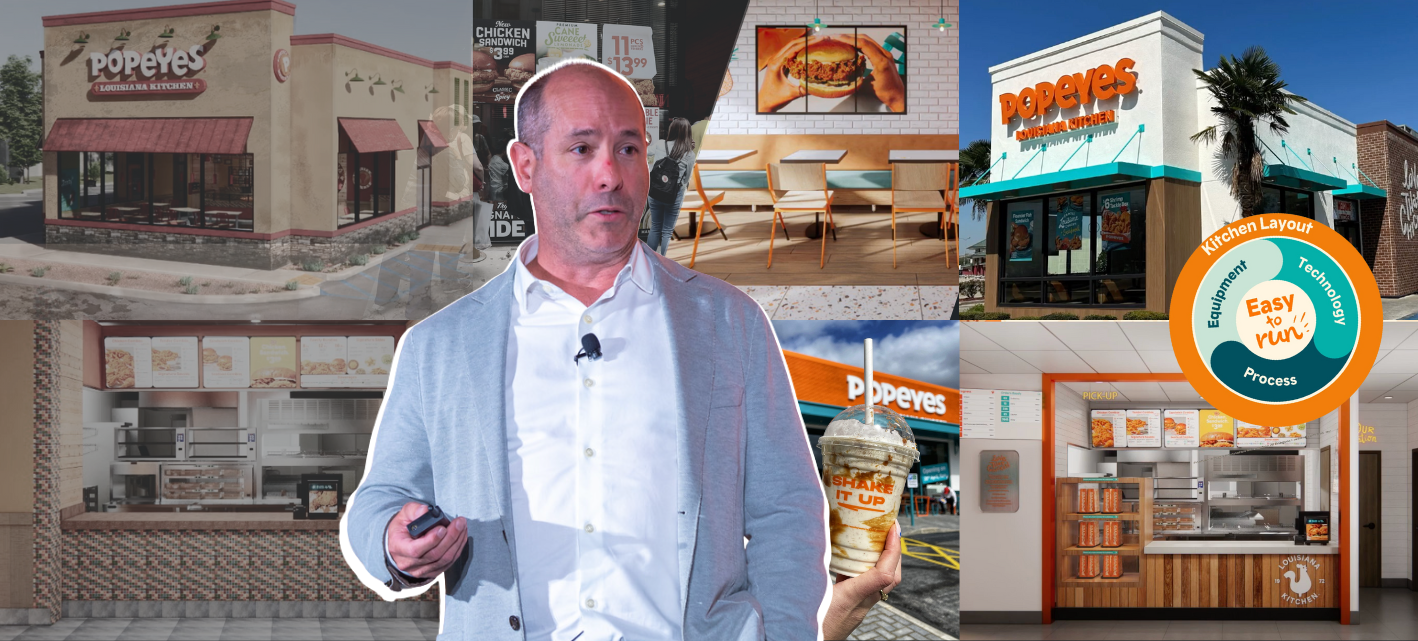When moderator Joe Avotins opened the RestaurantSpaces session by asking if anyone in the audience felt like they were "winning the cost battle," the silence spoke volumes. Not a single hand went up. What followed was a brutally honest conversation between two veterans managing massive development pipelines and the hard-earned wisdom that comes from opening hundreds of stores a year.
Aaron Harris, SVP of Development at Dutch Bros, and Kevin Kilgore, VP of Development at GoTo Foods, didn't sugarcoat the reality: development costs aren't just rising, they're threatening to erase years of painstaking efficiency gains. But rather than throwing up their hands, these operators are getting creative, building relationships, and sometimes just saying "no."
Seven Brands, One Subway Tile Spec
Kevin Kilgore's lightbulb moment came when he realized GoTo Foods had seven different subway tile specifications across their seven brands. "I'm like, what are we doing?" he said. The revelation sparked a company-wide standardization effort that's turning silos into savings.
"We're going through every single brand, every single commodity," Kilgore explained, "trying to streamline specifications and standardize everything from tile to microwaves to walk-in coolers."
The key insight? Food quality and consistency remain non-negotiable, but operational equipment often doesn't need to be brand-specific. "If this microwave works just as well for all seven brands, would you rather save $400 on a microwave and then multiply that by 300?" Kilgore asked. That starts to really add up, and suddenly you're talking real money. “Our leadership likes to see those big savings numbers."
The Art of Being a Better Customer
Aaron Harris approaches supplier relationships with a different philosophy: "I always say, what can I do to be a better customer?" His strategy involves maintaining competitive tension—always having supplier A and supplier B—while making suppliers' lives easier for long-term savings.
With 400 stores in their pipeline and cookie-cutter buildings, Dutch Brothers works in tranches of 100, committing to tile, HVAC, and equipment in manageable chunks. But Harris emphasized that being a good customer means more than just volume commitments.
"We talk to our suppliers weekly," Harris noted. "Even though it's the same products, it's weekly conversations going on." This constant communication helps manage the unpredictability that suppliers consistently cite as their biggest challenge.
City Hall Diplomacy: Why Showing Up Matters
The most actionable insights came from Harris's approach to municipal relationships. His strategy? Show up in person, wearing company gear, with gifts in hand.
"I want somebody in a Dutch Bros shirt or lapel pin to go meet the head of economic development, the head of city planning, the mayor," Harris explained. "Bring some drinks, gift cards, whatever it takes, and walk out with not only an understanding of the process, but with contact names and information."
The payoff came through in a striking story from Marysville, California, where the city hit Dutch Brothers with 19 unexpected conditions of approval after they were $100,000 deep in soft costs. Harris's response? He simply said no.
"I called the city manager and said, 'I'm withdrawing our application,'" Harris recounted. After a week and a half of the city calling back with compromises, "they issued the permit with no conditions of approval. They called my construction manager to pick it up and said, 'just don't have Aaron call us.'"
The Modular Reality Check
Both operators have experimented with modular construction, and their experiences offer a sobering reality check for an industry still chasing the modular dream.
Harris, who's built about 100 modular units with five or six manufacturers, was candid about the challenges: "The juice isn't necessarily worth the squeeze."
"I might have saved 22 days, but it was 12 days later that the power actually got turned on," Harris explained. "The last major event before I open doors is legitimately getting power."
The bigger issue? Knowledge gaps and responsibility matrices. "It's that old Spider-Man meme where you've got five Spider-Mans pointing at each other," Harris said. "Who's responsible for what?"
Kilgore agreed that modular was oversold on cost savings when the real benefits should have been "time savings, consistency, predictability, and supply chain."
The Bottom Line
The cost battle in restaurant development isn't just about finding cheaper materials or negotiating better prices. It's about building relationships, being willing to walk away from bad deals, and understanding that efficiency gains often come from places you didn't expect.
As Harris put it: "We get to do this. We get to have this struggle and create a compelling future for operating partners and those communities." Sometimes the silver lining isn't avoiding the storm, it's learning to navigate it better than your competition.
Watch the full discussion below: 👇

Posted by
Chain Restaurants Reimagined.
The Retreat to Reimagine Restaurant Development, Design + Technology.
April 12-14, 2026 | Miami, FL





-3.png)
-4.png)
-3.png)



Comments